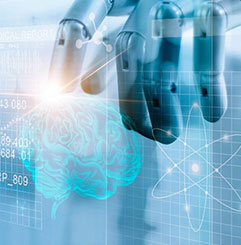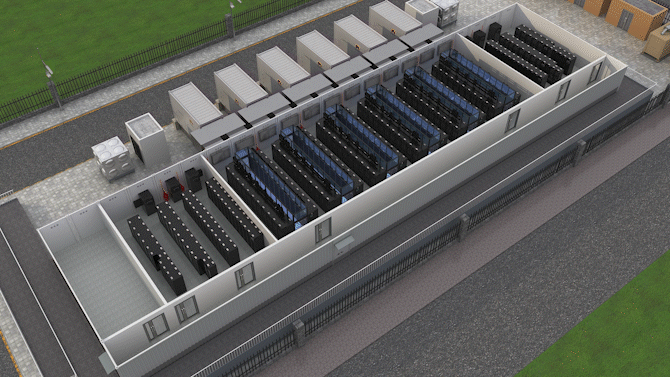CloudExchange Launches Africa's First Uptime Institute Tier IV Prefabricated Data Center
Trends
Colocation industry trends
5G, industrial Internet, cloud computing, and AI need more data resource storage, computing, and applications. In response, data center technologies and models keep evolving.
A key infrastructure for digitalization, data centers need to converge various data resources, use greener and low-carbon technologies, improve security and reliability, and provide efficient computing services to enable applications in a wide range of industries.

Application Scenarios
 Large Data Center Construction
Large Data Center Construction
Facilities are built for data center service providers to accelerate business growth.
 Data Center Modernization
Data Center Modernization
Old and inefficient data centers are upgraded to save energy and reduce carbon emissions.
Challenges

Carbon neutrality
A global priority, carbon neutrality will lead to profound changes, including in technologies. Building green and low-carbon data centers is essential to go carbon neutral.

IT power evolution
Data centers need to be designed with future power and cooling requirements in mind, suitable for the next 10 to 15 years.

Data security
Facilities must be secure and stable to assure the security of data housed in data centers.

Complex O&M
Large data center operations involve complex O&M, which needs to be simplified.
Design Principle
- Green: Uses more green energy sources and deploys green power on a larger scale.
- Efficient: Consumes less electricity, water, and other resources.
- Recyclable: Uses technologies for waste heat and material recovery.
 Sustainable
Sustainable
 Simplified
Simplified
- Architecture: Uses innovative designs for buildings and equipment rooms.
- Power supply: Redefines components and links.
- Cooling: Shortens links while boosting efficiency.
- Automated O&M: Goes digital and intelligent.
- Automatic energy efficiency optimization: Enables smart cooling.
- Autonomous operations: Maximizes resource value.
 Autonomous
Autonomous
 Reliable
Reliable
- Proactive security: Prevents faults and closes them quickly.
- Secure architecture: Safeguards everything from components to data centers.
Solutions & Benefits

-
Efficient
UPS5000H delivers up to 99% efficiency in S-ECO mode and features 0 ms transfer.
Indirect evaporative cooling capitalizes on natural cooling sources.
-
Simple
The integrated system design simplifies procurement and speeds up delivery.
High-density deployment reduces the footprint.
-
Smart
Full-link visualization: Real-time monitoring simplifies O&M management.
Intelligent optimization: iCooling reduces PUE by 8%–15%.
-
Reliable
AI enables proactive and predictive maintenance.
Components, devices, and systems adopt modular and redundancy designs.
Challenges

High power consumption
Old data centers do not comply with PUE regulations, lacking green and low-carbon designs or facing technological limits.

Slow modernization
Old devices are difficult to maintain and upgrade. New systems and devices should be adaptable and easy to install.
Design Principle
- Green: Uses more green energy sources.
- Efficient: Consumes less electricity, water, and other resources.
- Recyclable: Uses technologies for waste heat and material recovery.
 Sustainable
Sustainable
 Simplified
Simplified
- Architecture: Uses innovative designs for buildings and equipment rooms.
- Power supply: Redefines components and links.
- Cooling: Shortens links while boosting efficiency.
- Automated O&M: Goes digital and intelligent.
- Automatic energy efficiency optimization: Enables smart cooling.
- Autonomous operations: Maximizes resource value.
 Autonomous
Autonomous
 Reliable
Reliable
- Proactive security: Prevents faults and closes them quickly.
- Secure architecture: Safeguards everything from components to data centers.
Solutions & Benefits

-
Efficient
UPS5000H delivers up to 99% efficiency in S-ECO mode and features 0 ms transfer.
Indirect evaporative cooling capitalizes on natural cooling sources.
-
Simple
The integrated system design simplifies procurement and speeds up delivery.
High-density deployment reduces the footprint, leaving more space for other purposes.
-
Smart
Full-link visualization: Real-time monitoring simplifies O&M management.
Intelligent optimization: iCooling reduces PUE by 8%–15%.
-
Reliable
AI enables proactive and predictive maintenance.
Components, devices, and systems adopt modular and redundancy designs.
View Other Industry Solutions


Marketing Materials Center
For more information, please access the Huawei Digital Power Marketing Materials Center.





















